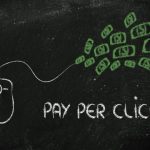How To Create a Comprehensive Sales Enablement Strategy
In the ever-evolving world of sales, a dynamic approach is essential. Among the most effective strategies is sales enablement — a systematic approach that equips sales teams with the necessary tools, knowledge, and content to optimize performance. Ensuring your sales force is adequately enabled can be a game changer, charting your path to unprecedented business growth. Keep reading to explore how you can craft an effective sales enablement strategy.
Table of Contents
Understanding the Role of Sales Enablement in Business Growth
The significance of sales enablement in driving business growth cannot be overstated. Sales Enablement makes the sales department more productive by providing the right training, coaching, and resources, which significantly speeds up the sales process.
It is worth noting that a successful enablement strategy empowers the sales team to comprehend and sell the company’s proposition effectively, fostering a culture of success. The boost in sales productivity and efficiency in turn drives business growth.
Moreover, with a robust sales enablement technique in place, sales personnel can deliver value to their potential clients, helping them make informed decisions. Nurturing this kind of relationship with leads invariably enhances customer retention rates and facilitates business expansion.
Key Elements to Include in Your Sales Enablement Strategy
Alt text: Two employees going over sales enablement strategy via video chat on a laptop
No two sales enablement strategies are identical. Even then, some key elements hold universal relevance. For instance, a comprehensive sales enablement strategy must encompass clear communication of goals and targets, well-defined roles and expectations, and regular training and coaching sessions.
Moreover, sales content, customer insights, and advanced sales tools and technologies are essential components of an effective enablement strategy. They equip the sales team to engage potential clients and close deals satisfactorily.
Also, the strategy should entail assessment procedures to gauge performance periodically. This aids in identifying areas of improvement, ensuring the strategy remains relevant and effective.
Furthermore, a culture of continual learning and adaptation should be fostered within the sales team. This makes them resilient to changes in the market trends, strengthening their longevity in your business.
Steps to Developing a Powerful Sales Enablement Plan
Creating a sales enablement plan may seem daunting, but it doesn’t have to be. Start by determining your sales goals and objectives. This forms the foundation upon which the entire strategy is built.
Next, analyze your buyers’ needs, preferences, and purchasing habits. It’s only by understanding your audience that you can create a strategy that truly resonates with them.
Thirdly, equip your sales team with the right tools and resources. This can be anything from sales scripts and email templates to advanced analytics software.
Lastly, continually measure and adjust your strategy. It’s unlikely that you’ll get everything right straightaway. Learning from outcomes and refining your approach will lead to long-term success.
Implementing Sales Enablement Techniques for Greater Sales Performance
Having a well-defined sales enablement strategy is one thing, but implementing it is another. The first step involves onboarding your sales team, orienting them on the objectives and processes of the strategy.
Remember to prioritize regular training and coaching sessions. This not only shapes them into proficient salespeople but also keeps them updated on the latest products, market trends, and competitive landscape.
Moreover, encourage them to use the sales enablement tools provided. These tools play a crucial role in lead generation, customer engagement, and sales conversions. Thus, helping them improve their performance.
Last but not least, foster a culture of open communication. This enables team members to learn from each other’s successes and failures, thereby improving the overall performance of the team.
Evaluating the Success of Your Sales Enablement Strategy
Alt text: Two businessmen going over sales enablement strategy
Your sales enablement strategy is a dynamic tool that requires regular assessment to ensure it remains effective. To this end, regularly review your objectives and track key performance indicators (KPIs).
This tracking could include measuring the conversion rate, length of the sales cycle, quota attainment, and client retention rate. Not only will these metrics indicate how successful your strategy is, but they also provide insight into adjustments that may be needed.
Remember, feedback from your sales team is just as critical. Their firsthand experiences will help you understand what’s working and what needs to be improved.
Finally, realize that a successful sales enablement strategy doesn’t just enhance sales; it leads to improved customer satisfaction, increased team confidence, and sustained business growth.
Overall, creating and implementing a comprehensive sales enablement strategy isn’t easy but it delivers significant results. This process requires an in-depth understanding of your objectives, careful planning, and an ongoing commitment to training and performance evaluation. With these steps executed correctly, your business can expect a formidable impact on its sales performance, employee satisfaction, and overall business growth.









